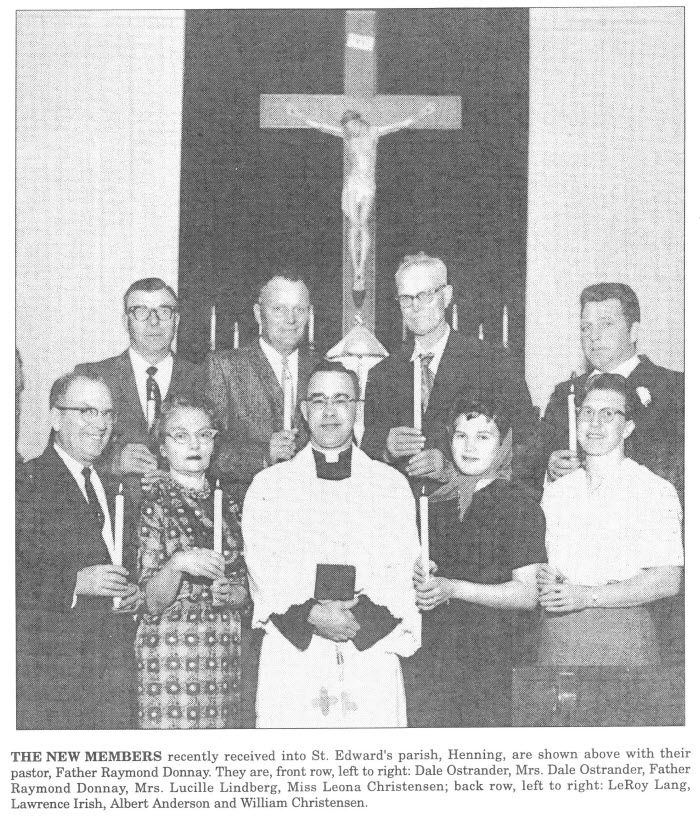ST. EDWARD History


Church named after Saint Edward the Confessor
Saint Edward the Confessor was born in 1003, the son of Ethelred and Emma. His mother's relatives were among the English royalty. He was sent to Normandy during his youth because of political intrigue when Ethelred died. Living in exile from England, he understood at an early age the folly of worldly ambition. He came to love assisting at Mass and other religious services, and befriended many of the religious men and women in Normandy. When those with designs on the crown died, Edward became King of England by popular acclaim in 1042 at the age of forty. He was known for his simplicity, gentleness, humility, and purity. Because of his prudence and gently spirit, his reign was one of almost unbroken peace. He was generous with alms to the poor and for the support of churches, and levied no taxes. Because he could not make a personal pilgrimage to Rome due to his responsibilities as king, the Pope allowed him to fullfill this personal vow of rebuilding St. Peter's Abbey in London ... the present Westminster Abbey. Edward died on January 5, 1066 and was canonized by Pope Alexander III in 1161. His incorrupt body is buried at Westminster. His feast day is October 13.


PARISH HISTORY
The Church of Saint Edward was established by Bishop Joseph Busch in June of 1945 through the pastoral efforts of Monsignor August Plachta and Father Robert Voigt, the pastor and associate at Saint Ann's in Wadena. At its founding, the community worshipped in Belmont Funeral Home (the local funeral parlor). In the summer of 1949, the parish purchased a 1,500 square foot Lutheran church in Bertha and literally moved it over 25 miles to Henning, on land just across Highway 108 from the new building. While the parish itself numbered about 30 families, already in those early years, large numbers of summer visitors to the area filled the church. This church was dedicated on June 21, 1950 by Bishop William O'Brien, auxiliary bishop of Chicago and present of the Catholic Extension Society. Also present was then-Coadjutor Bishop Peter Bartholome and some sixty priests. Bishop O'Brien also confirmed 31 young people and six adults during the ceremony.
By 1972, the first Saint Edward Catholic Church had become too small and was in need of extensive upgrades. The parish decided, with the permission of Bishop Speltz, to purchase Trinity Lutheran Church in Henning when that congregation combined with Good Shepherd Lutheran Church. The previous church was dismantled board by board for salvage.
VISION
Over the years, Saint Edward Catholic Church has known much transition in pastoral leadership, and has shared pastoral staffing with other parishes, but has always retained its close-knit community, a vibrant faith and generous commitment to the mission of the Church.

St. Edward
Circa 1950

St. Edward
Circa 2001



